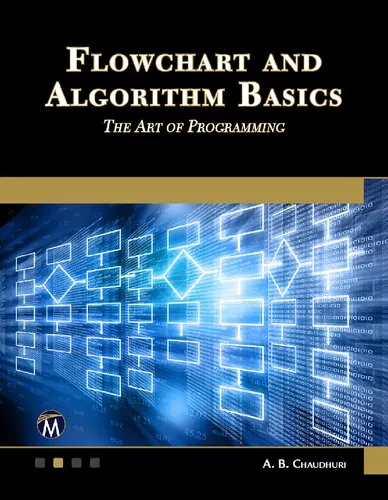Introduction to the physics of waves
4.5
Reviews from our users

You Can Ask your questions from this book's AI after Login
Each download or ask from book AI costs 2 points. To earn more free points, please visit the Points Guide Page and complete some valuable actions.Related Refrences:
Introduction to "Introduction to the Physics of Waves"
"Introduction to the Physics of Waves" is a comprehensive and accessible book designed for students, researchers, and enthusiasts who wish to dive deeply into the intricate world of wave physics. Authored by Tim Freegarde, this text emphasizes clarity, curiosity, and the cohesive application of fundamental principles to understand wave phenomena, which manifest in various domains of physics. Whether you are navigating mechanical waves, electromagnetic waves, or quantum wave-like behavior, this book offers a coherent foundation with an analytical yet insightful approach.
In this book, you'll find a balance between theory and practical applications, making it an ideal companion for undergraduate courses or independent studies in physics. Presented with lucid explanations and reinforced by physical intuition, the book seamlessly bridges the abstract mathematical treatment of waves with their tangible and observable real-world applications.
Detailed Summary of the Book
The book begins by exploring the fundamental characteristics of waves — periodicity, frequency, wavelength, and amplitude — while gradually advancing to concepts such as superposition, interference, and standing waves. Early chapters lay down the essential groundwork on harmonic motion and how oscillatory behavior leads naturally to wave formation in linear systems.
As the narrative progresses, it branches into the fascinating diversity of wave phenomena. Special attention is given to mechanical waves, sound waves, and the mathematics of wave equations. The reader is introduced to solutions of the wave equation in one, two, and three dimensions, highlighting topics like d'Alembert solutions, normal modes, and energy transport.
A significant portion of the book delves into electromagnetic waves, discussing their properties, Maxwell's equations, and how these waves propagate in free space, resonators, and waveguides. The text also introduces the reader to the concept of dispersion, the role of refractive indices, and group velocity.
Finally, the book turns its focus to the quantum domain with discussions on wave-particle duality and the Schrödinger equation. This section not only demonstrates the omnipresence of waves across physics but also provides a unifying perspective on the subject.
Key Takeaways
- An intuitive understanding of what constitutes a wave and the fundamental principles that govern wave phenomena.
- How oscillatory motion forms the basis of wave behavior in systems ranging from simple strings to electromagnetic fields.
- Mathematical tools and techniques, such as differential equations and Fourier analysis, to describe, model, and predict wave behavior.
- Insights into practical applications, including sound waves, optics, transmission lines, and quantum mechanics.
- A comprehensive treatment of wave interference, resonance, and dispersion.
Famous Quotes from the Book
"Waves are the essence of communication — they carry sound to our ears, light to our eyes, and ideas to our understanding."
"To study waves is to explore the union of mathematics and nature, where equations find their purpose in describing motion."
Why this Book Matters
"Introduction to the Physics of Waves" stands out for its ability to intertwine classical principles with modern physics, offering readers a holistic understanding of wave phenomena. Waves not only permeate all branches of physics but also underpin technologies that have profoundly transformed our daily lives, from communication systems to medical imaging and beyond. By gaining clarity on such a fundamental topic, the readers arm themselves with tools and insights that empower them in both scientific inquiry and technological innovation.
The book is written to ensure accessibility without compromising on rigor. It appeals to a broad audience, from aspiring physicists eager to master the basics to advanced learners polishing their understanding. Its focus on derivations, logic, and relatable analogies makes it an invaluable addition to any physicist's library.
Whether you study it as part of structured coursework or as a guide to self-driven exploration, this text will leave you with a deeper appreciation for the beauty and universality of waves. It invites readers to view the physical world as a symphony of oscillations, governed by elegant equations but manifested in the most diverse and spectacular ways.
Free Direct Download
You Can Download this book after Login
Accessing books through legal platforms and public libraries not only supports the rights of authors and publishers but also contributes to the sustainability of reading culture. Before downloading, please take a moment to consider these options.
Find this book on other platforms:
WorldCat helps you find books in libraries worldwide.
See ratings, reviews, and discussions on Goodreads.
Find and buy rare or used books on AbeBooks.
1286
بازدید4.5
امتیاز0
نظر98%
رضایتReviews:
4.5
Based on 0 users review
Questions & Answers
Ask questions about this book or help others by answering
No questions yet. Be the first to ask!






![The Ultimate iOS Interview Playbook: Conquer Swift, frameworks, design patterns, and app architecture [Team-IRA]](https://s3.refhub.ir/images/thumb/The_Ultimate_iOS_Interview_Playbook__Conquer__29925.webp)







